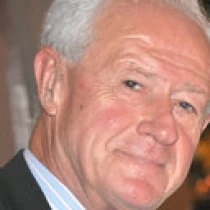Low-dose TLR9 agonist ODN 2395 drives microglial neuroprotective activation by CREB phosphorylation
Abstract
Background: The Toll-like receptor 9 (TLR9) agonist cytosine-phosphate-guanine (CpG) oligodeoxynucleotide (ODN) has been reported to induce microglial pro-inflammatory polarization, contributing to neuronal damage. This study investigates the anti-inflammatory activation of microglia by low-dose CpG ODN 2395 and its underlying mechanism. Methods and Results: BV2 microglia, primary mouse mixed glial cultures, and primary mouse mesencephalic neuron-glial cultures were treated with ODN 2395. RT-qPCR, ELISA, Western blotting, and immunocytochemistry were employed. Lipopolysaccharide (LPS) was used to induce neurotoxicity and serve as a control to compare inflammatory responses. Low-dose ODN 2395 (100–200 nM) causes minimal mitochondrial ROS production and promotes anti-inflammatory polarization in microglia, characterized by high levels of Arginase 1 (Arg1), IL-10, and brain-derived neurotrophic factor (BDNF), but low expression of iNOS, TNF-α, and IL-1β. Phosphorylated cAMP response element-binding protein (CREB) is essential for the induction of anti-inflammatory and neuroprotective factors by ODN 2395. Even with endoplasmic reticulum stress, a common pathology in neuroinflammatory disorders, low-dose ODN 2395-activated microglia hardly release mature IL-1β, partially due to defective NOD-, LRR-, and pyrin domain-containing protein 3 (NLRP3) priming. NLRP3 knockout validated its crucial role in microglial mature IL-1β release. In neuron-glial cultures, low-dose ODN 2395 significantly mitigated LPS-induced neurotoxicity, evidenced by preserved neurons and reduced reactive microgliosis. Conclusions: Our findings provide novel insights into the immune responses of microglial TLR9 activation and suggest stimulatory intensity of TLR9 as a potential determinant for the immunotherapeutic strategy.
Copyright (c) 2025 Author(s)

This work is licensed under a Creative Commons Attribution 4.0 International License.
References
1. Gilhus NE, Deuschl G. Neuroinflammation—a common thread in neurological disorders. Nature Reviews Neurology. 2019; 15(8): 429-430. doi: 10.1038/s41582-019-0227-8
2. Nakagawa Y, Chiba K. Role of Microglial M1/M2 Polarization in Relapse and Remission of Psychiatric Disorders and Diseases. Pharmaceuticals. 2014; 7(12): 1028-1048. doi: 10.3390/ph7121028
3. Cherry JD, Olschowka JA, O’Banion MK. Neuroinflammation and M2 microglia: the good, the bad, and the inflamed. Journal of Neuroinflammation. 2014; 11(1). doi: 10.1186/1742-2094-11-98
4. Tang Y, Le W. Differential Roles of M1 and M2 Microglia in Neurodegenerative Diseases. Molecular Neurobiology. 2015; 53(2): 1181-1194. doi: 10.1007/s12035-014-9070-5
5. Atta AA, Ibrahim WW, Mohamed AF, et al. Microglia polarization in nociplastic pain: mechanisms and perspectives. Inflammopharmacology. 2023; 31(3): 1053-1067. doi: 10.1007/s10787-023-01216-x
6. Liu S, Liu Y, Hao W, et al. TLR2 Is a Primary Receptor for Alzheimer’s Amyloid β Peptide to Trigger Neuroinflammatory Activation. The Journal of Immunology. 2012; 188(3): 1098-1107. doi: 10.4049/jimmunol.1101121
7. Cui W, Sun C, Ma Y, et al. Inhibition of TLR4 Induces M2 Microglial Polarization and Provides Neuroprotection via the NLRP3 Inflammasome in Alzheimer’s Disease. Frontiers in Neuroscience; 2020. doi: 10.3389/fnins.2020.00444
8. Ruganzu JB, Peng X, He Y, et al. Downregulation of TREM2 expression exacerbates neuroinflammatory responses through TLR4-mediated MAPK signaling pathway in a transgenic mouse model of Alzheimer’s disease. Molecular Immunology. 2022; 142: 22-36. doi: 10.1016/j.molimm.2021.12.018
9. Chen R, Wang Z, Zhi Z, et al. Targeting the TLR4/NF-κB pathway in β-amyloid-stimulated microglial cells: A possible mechanism that oxysophoridine exerts anti-oxidative and anti-inflammatory effects in an in vitro model of Alzheimer’s disease. Brain Research Bulletin. 2021; 175: 150-157. doi: 10.1016/j.brainresbull.2021.07.019
10. Wang J, He W, Zhang J. A richer and more diverse future for microglia phenotypes. Heliyon. 2023; 9(4): e14713. doi: 10.1016/j.heliyon.2023.e14713
11. Lloyd AF, Miron VE. The pro-remyelination properties of microglia in the central nervous system. Nature Reviews Neurology. 2019; 15(8): 447-458. doi: 10.1038/s41582-019-0184-2
12. Lobo-Silva D, Carriche GM, Castro AG, et al. Balancing the immune response in the brain: IL-10 and its regulation. Journal of Neuroinflammation. 2016. doi: 10.1186/s12974-016-0763-8
13. Wang P, Wu P, Siegel MI, et al. Interleukin (IL)-10 Inhibits Nuclear Factor кB (NFкB) Activation in Human Monocytes. Journal of Biological Chemistry. 1995; 270(16): 9558-9563. doi: 10.1074/jbc.270.16.9558
14. Ip WKE, Hoshi N, Shouval DS, et al. Anti-inflammatory effect of IL-10 mediated by metabolic reprogramming of macrophages. Science. 2017; 356(6337): 513-519. doi: 10.1126/science.aal3535
15. York AG, Skadow MH, Oh J, et al. IL-10 constrains sphingolipid metabolism to limit inflammation. Nature. 2024; 627(8004): 628-635. doi: 10.1038/s41586-024-07098-5
16. Jonak CR, Peterson AR, Binder DK. Inflammation and posttraumatic epilepsy. In: Jonak CR, Peterson AR, Binder DK (editors). Posttraumatic Epilepsy. Academic Press; 2023.
17. Jian W, Zhang Z, Chu S, et al. Potential roles of brain barrier dysfunctions in the early stage of Alzheimer’s disease. Brain Research Bulletin. 2018; 142: 360-367. doi: 10.1016/j.brainresbull.2018.08.012
18. Fraga VG, Caramelli P, Gomes KB. Aging, demented patients and polymorphisms in cytokine genes. In: Martin CR, Preedy VR, Rajendram R (editors). Factors Affecting Neurological Aging. Academic Press; 2021.
19. David S, López-Vales R, Wee Yong V. Harmful and beneficial effects of inflammation after spinal cord injury. In: Verhaagen J, McDonald JW (editors). Handbook of Clinical Neurology. Elsevier; 2012
20. Takeshita F, Leifer CA, Gursel I, et al. Cutting Edge: Role of Toll-Like Receptor 9 in CpG DNA-Induced Activation of Human Cells. The Journal of Immunology. 2001; 167(7): 3555-3558. doi: 10.4049/jimmunol.167.7.3555
21. Kawasaki T, Kawai T. Toll-Like Receptor Signaling Pathways. Frontiers in Immunology; 2014. doi: 10.3389/fimmu.2014.00461
22. O’Neill LAJ, Golenbock D, Bowie AG. The history of Toll-like receptors—redefining innate immunity. Nature Reviews Immunology. 2013; 13(6): 453-460. doi: 10.1038/nri3446
23. Li T, Wu J, Zhu S, et al. A Novel C Type CpG Oligodeoxynucleotide Exhibits Immunostimulatory Activity In Vitro and Enhances Antitumor Effect In Vivo. Frontiers in Pharmacology; 2020. doi: 10.3389/fphar.2020.00008
24. Dalpke AH, Schäfer MKH, Frey M, et al. Immunostimulatory CpG-DNA Activates Murine Microglia. The Journal of Immunology. 2002; 168(10): 4854-4863. doi: 10.4049/jimmunol.168.10.4854
25. Iliev AI, Stringaris AK, Nau R, et al. Neuronal injury mediated via stimulation of microglial toll‐like receptor‐9 (TLR9). The FASEB Journal. 2003; 18(2): 1-17. doi: 10.1096/fj.03-0670fje
26. Rosenberger K, Derkow K, Dembny P, et al. The impact of single and pairwise Toll-like receptor activation on neuroinflammation and neurodegeneration. Journal of Neuroinflammation. 2014. doi: 10.1186/s12974-014-0166-7
27. Zhao Z, Wang Y, Zhou R, et al. A novel role of NLRP3-generated IL-1β in the acute-chronic transition of peripheral lipopolysaccharide-elicited neuroinflammation: implications for sepsis-associated neurodegeneration. Journal of Neuroinflammation. 2020. doi: 10.1186/s12974-020-1728-5
28. Chen SH, Oyarzabal EA, Sung YF, et al. Microglial regulation of immunological and neuroprotective functions of astroglia. Glia. 2014; 63(1): 118-131. doi: 10.1002/glia.22738
29. Roda JM, Parihar R, Carson WE. CpG-Containing Oligodeoxynucleotides Act through TLR9 to Enhance the NK Cell Cytokine Response to Antibody-Coated Tumor Cells. The Journal of Immunology. 2005; 175(3): 1619-1627. doi: 10.4049/jimmunol.175.3.1619
30. Riley JS, Tait SW. Mitochondrial DNA in inflammation and immunity. EMBO reports. 2020; 21(4). doi: 10.15252/embr.201949799
31. Saraiva M, O’Garra A. The regulation of IL-10 production by immune cells. Nature Reviews Immunology. 2010; 10(3): 170-181. doi: 10.1038/nri2711
32. Ouyang W, Rutz S, Crellin NK, et al. Regulation and Functions of the IL-10 Family of Cytokines in Inflammation and Disease. Annual Review of Immunology. 2011; 29(1): 71-109. doi: 10.1146/annurev-immunol-031210-101312
33. Ruffell D, Mourkioti F, Gambardella A, et al. A CREB-C/EBPβ cascade induces M2 macrophage-specific gene expression and promotes muscle injury repair. In: Proceedings of the National Academy of Sciences; 2009. doi: 10.1073/pnas.0908641106
34. Sakamoto K, Karelina K, Obrietan K. CREB: a multifaceted regulator of neuronal plasticity and protection. Journal of Neurochemistry. 2010; 116(1): 1-9. doi: 10.1111/j.1471-4159.2010.07080.x
35. Kodi T, Sankhe R, Gopinathan A, et al. New Insights on NLRP3 Inflammasome: Mechanisms of Activation, Inhibition, and Epigenetic Regulation. Journal of Neuroimmune Pharmacology. 2024. doi: 10.1007/s11481-024-10101-5
36. Liu X, Chen Y, Wang H, et al. Microglia-derived IL-1β promoted neuronal apoptosis through ER stress-mediated signaling pathway PERK/eIF2α/ATF4/CHOP upon arsenic exposure. Journal of Hazardous Materials. 2021; 417: 125997. doi: 10.1016/j.jhazmat.2021.125997
37. Gray A, Maguire T, Schloss R, et al. Identification of IL‐1β and LPS as optimal activators of monolayer and alginate‐encapsulated mesenchymal stromal cell immunomodulation using design of experiments and statistical methods. Biotechnology Progress. 2015; 31(4): 1058-1070. doi: 10.1002/btpr.2103
38. Wendeln AC, Degenhardt K, Kaurani L, et al. Innate immune memory in the brain shapes neurological disease hallmarks. Nature. 2018; 556(7701): 332-338. doi: 10.1038/s41586-018-0023-4
39. Celardo I, Costa AC, Lehmann S, et al. Mitofusin-mediated ER stress triggers neurodegeneration in pink1/parkin models of Parkinson’s disease. Cell Death & Disease. 2016; 7(6): e2271-e2271. doi: 10.1038/cddis.2016.173
40. Jangra A, Sriram CS, Lahkar M. Lipopolysaccharide-Induced Behavioral Alterations Are Alleviated by Sodium Phenylbutyrate via Attenuation of Oxidative Stress and Neuroinflammatory Cascade. Inflammation. 2016; 39(4): 1441-1452. doi: 10.1007/s10753-016-0376-5
41. Qian L, Hu X, Zhang D, et al. β2 Adrenergic receptor activation induces microglial NADPH oxidase activation and dopaminergic neurotoxicity through an ERK‐dependent/protein kinase A‐independent pathway. Glia. 2009; 57(15): 1600-1609. doi: 10.1002/glia.20873
42. Chen SH, Oyarzabal EA, Hong JS. Critical role of the Mac1/NOX2 pathway in mediating reactive microgliosis-generated chronic neuroinflammation and progressive neurodegeneration. Current Opinion in Pharmacology. 2016; 26: 54-60. doi: 10.1016/j.coph.2015.10.001
43. Sprenkle NT, Sims SG, Sánchez CL, et al. Endoplasmic reticulum stress and inflammation in the central nervous system. Molecular Neurodegeneration; 2017. doi: 10.1186/s13024-017-0183-y
44. Zhou Z, Peng X, Insolera R, et al. IL-10 promotes neuronal survival following spinal cord injury. Experimental Neurology. 2009; 220(1): 183-190. doi: 10.1016/j.expneurol.2009.08.018
45. Perez-Asensio FJ, Perpiñá U, Planas AM, et al. Interleukin-10 regulates progenitor differentiation and modulates neurogenesis on adult brain. Journal of Cell Science. 2013. doi: 10.1242/jcs.127803
46. Vidal PM, Lemmens E, Dooley D, et al. The role of “anti-inflammatory” cytokines in axon regeneration. Cytokine & Growth Factor Reviews. 2013; 24(1): 1-12. doi: 10.1016/j.cytogfr.2012.08.008
47. Wang Y, Yu P, Li Y, et al. Early-Released Interleukin-10 Significantly Inhibits Lipopolysaccharide-Elicited Neuroinflammation In Vitro. Cells. 2021; 10(9): 2173. doi: 10.3390/cells10092173
48. Chen H, Lin W, Zhang Y, et al. IL-10 Promotes Neurite Outgrowth and Synapse Formation in Cultured Cortical Neurons after the Oxygen-Glucose Deprivation via JAK1/STAT3 Pathway. Scientific Reports. 2016; 6(1). doi: 10.1038/srep30459
49. Lu X, Oh-hora M, Takeda K, et al. Selective suppression of IL-10 transcription by calcineurin in dendritic cells through inactivation of CREB. International Immunology. 2021; 34(4): 197-206. doi: 10.1093/intimm/dxab112



